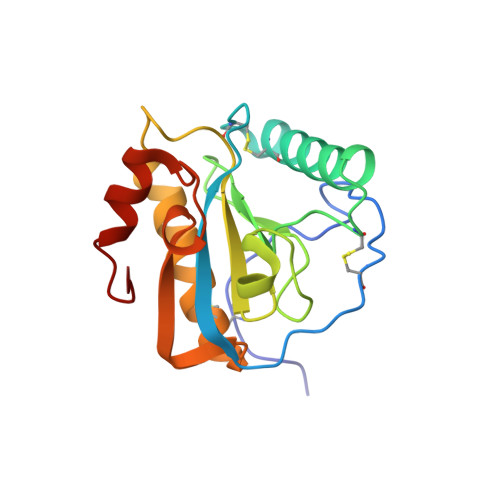Structural basis of the binding of fatty acids to peptidoglycan recognition protein, PGRP-S through second binding site.
Sharma, P., Yamini, S., Dube, D., Singh, A., Mal, G., Pandey, N., Sinha, M., Singh, A.K., Dey, S., Kaur, P., Mitra, D.K., Sharma, S., Singh, T.P.(2013) Arch Biochem Biophys 529: 1-10
- PubMed: 23149273
- DOI: https://doi.org/10.1016/j.abb.2012.11.001
- Primary Citation of Related Structures:
3T2V, 3UIL, 3UMQ, 3USX, 4FNN - PubMed Abstract:
Short peptidoglycan recognition protein (PGRP-S) is a member of the mammalian innate immune system. PGRP-S from Camelus dromedarius (CPGRP-S) has been shown to bind to lipopolysaccharide (LPS), lipoteichoic acid (LTA) and peptidoglycan (PGN). Its structure consists of four molecules A, B, C and D with ligand binding clefts situated at A-B and C-D contacts. It has been shown that LPS, LTA and PGN bind to CPGRP-S at C-D contact. The cleft at the A-B contact indicated features that suggested a possible binding of fatty acids including mycolic acid of Mycobacterium tuberculosis. Therefore, binding studies of CPGRP-S were carried out with fatty acids, butyric acid, lauric acid, myristic acid, stearic acid and mycolic acid which showed affinities in the range of 10(-5) to 10(-8) M. Structure determinations of the complexes of CPGRP-S with above fatty acids showed that they bound to CPGRP-S in the cleft at the A-B contact. The flow cytometric studies showed that mycolic acid induced the production of pro-inflammatory cytokines, TNF-¦Á and IFN-¦Ă by CD3+ T cells. The concentrations of cytokines increased considerably with increasing concentrations of mycolic acid. However, their levels decreased substantially on adding CPGRP-S.
Organizational Affiliation:
Department of Biophysics, All India Institute of Medical Sciences, New Delhi, India.















